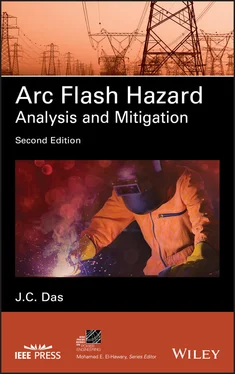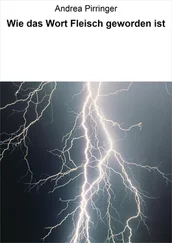19 11 TRANSFORMER PROTECTION 11.1 NEC REQUIREMENTS 11.2 ARC FLASH CONSIDERATIONS 11.3 SYSTEM CONFIGURATIONS OF TRANSFORMER CONNECTIONS 11.4 THROUGH FAULT CURRENT WITHSTAND CAPABILITY 11.5 CONSTRUCTING THE THROUGH FAULT CURVE ANALYTICALLY 11.6 TRANSFORMER PRIMARY FUSE PROTECTION 11.7 OVERCURRENT RELAYS FOR TRANSFORMER PRIMARY PROTECTION 11.8 LISTING REQUIREMENTS 11.9 EFFECT OF TRANSFORMER WINDING CONNECTIONS 11.10 REQUIREMENTS OF GROUND FAULT PROTECTION 11.11 THROUGH FAULT PROTECTION 11.12 OVERALL TRANSFORMER PROTECTION 11.13 A PRACTICAL STUDY FOR ARC FLASH REDUCTION REVIEW QUESTIONS REFERENCES
20 12 CURRENT TRANSFORMERS 12.1 ACCURACY CLASSIFICATION OF CTs 12.2 CONSTRUCTIONAL FEATURES OF CTs 12.3 SECONDARY TERMINAL VOLTAGE RATING 12.4 CT RATIO AND PHASE ANGLE ERRORS 12.5 INTERRELATION OF CT RATIO AND C CLASS ACCURACY 12.6 POLARITY OF INSTRUMENT TRANSFORMERS 12.7 APPLICATION CONSIDERATIONS 12.8 SERIES AND PARALLEL CONNECTIONS OF CTs 12.9 TRANSIENT PERFORMANCE OF THE CTs 12.10 PRACTICALITY OF APPLICATION 12.11 CTs FOR LOW RESISTANCE-GROUNDED MEDIUM VOLTAGE SYSTEMS 12.12 FUTURE DIRECTIONS REVIEW QUESTIONS REFERENCES
21 13 ARC-RESISTANT EQUIPMENT 13.1 CALCULATIONS OF ARC FLASH HAZARD IN ARC-RESISTANT EQUIPMENT 13.2 QUALIFICATIONS IN IEEE GUIDE 13.3 ACCESSIBILITY TYPES 13.4 IEC ACCESSIBILITY TYPES 13.5 ARC-RESISTANT RATINGS 13.6 TESTING ACCORDING TO IEEE GUIDE 13.7 PRESSURE RELIEF 13.8 VENTING AND PLENUMS 13.9 CABLE ENTRIES REVIEW QUESTIONS REFERENCES
22 14 RECENT TRENDS AND INNOVATIONS 14.1 STATISTICAL DATA OF ARC FLASH HAZARDS 14.2 ZONE-SELECTIVE INTERLOCKING 14.3 MICROPROCESSOR-BASED LOW VOLTAGE SWITCHGEAR 14.4 LOW VOLTAGE MOTOR CONTROL CENTERS 14.5 MAINTENANCE MODE SWITCH 14.6 INFRARED WINDOWS AND SIGHT GLASSES 14.7 FAULT CURRENT LIMITERS 14.8 PARTIAL DISCHARGE MEASUREMENTS REVIEW QUESTIONS REFERENCES
23 15 ARC FLASH HAZARD CALCULATIONS IN DC SYSTEMS 15.1 CALCULATIONS OF THE SHORT-CIRCUIT CURRENTS IN DC SYSTEMS 15.2 SOURCES OF DC SHORT-CIRCUIT CURRENTS 15.3 IEC CALCULATION PROCEDURES 15.4 SHORT CIRCUIT OF A LEAD ACID BATTERY 15.5 SHORT CIRCUIT OF DC MOTORS AND GENERATORS 15.6 SHORT-CIRCUIT CURRENT OF A RECTIFIER 15.7 SHORT CIRCUIT OF A CHARGED CAPACITOR 15.8 TOTAL SHORT-CIRCUIT CURRENT 15.9 DC CIRCUIT BREAKERS AND FUSES 15.10 ARCING IN DC SYSTEMS 15.11 EQUATIONS FOR CALCULATION OF INCIDENT ENERGY IN DC SYSTEMS 15.12 PROTECTION OF THE SEMICONDUCTOR DEVICES REVIEW QUESTIONS REFERENCES
24 16 APPLICATION OF ETHERNET AND IEC 61850 COMMUNICATIONS 16.1 IEC 61850 PROTOCOL 16.2 MODERN IEDs 16.3 SUBSTATION ARCHITECTURE 16.4 IEC 61850 COMMUNICATION STRUCTURE 16.5 LOGICAL NODES 16.6 ETHERNET CONNECTION 16.7 NETWORKING MEDIA 16.8 NETWORK TOPOLOGIES 16.9 APPLICATION TO ARC FLASH RELAYING AND COMMUNICATIONS REVIEW QUESTIONS REFERENCES
25 APPENDIX A: STATISTICS AND PROBABILITY APPLIED TO ELECTRICAL ENGINEERING A.1 MEAN MODE AND MEDIAN A.2 MEAN AND STANDARD DEVIATION A.3 SKEWNESS AND KURTOSIS A.4 NORMAL OR GAUSSIAN DISTRIBUTION A.5 CURVE FITTING: LEAST SQUARE LINE REFERENCES
26 APPENDIX B: TABLES FOR QUICK ESTIMATION OF INCIDENT ENERGY AND PPE IN ELECTRICAL SYSTEMS
27 INDEX
28 IEEE PRESS SERIES ON POWER ENGINEERING
29 END USER LICENSE AGREEMENT
1 Chapter 1 TABLE 1.1. Ballistics V 50Results for Arc-Rated Fabric Systems TABLE 1.2. Resistance of 130-cm 2Areas of Various Materials TABLE 1.3. Time–Current Zones for 15–100 Hz AC Currents for Hand-to-Feet Path... TABLE 1.4. Limitations of ARC Flash Hazard Calculation Methods TABLE 1.5. Classes of Equipment and Typical Bus Gaps TABLE 1.6. Classes of Equipment and Typical Working Distances TABLE 1.7. Factors for Equipment and Voltage Classes TABLE 1.8. Protective Clothing Characteristics TABLE 1.9. Limited Approach and Restricted Approach Boundaries TABLE 1.10. Arc Flash Boundary and Incident Energy Release for 30 kA of Bolte... TABLE 1.11. Arc Flash Boundary and Incident Energy Release for 30 kA of Bolte... TABLE 1.12. Statistics of Arc Flash Incidents TABLE 1.13. Arc Flash Calculations, Example 1.5 TABLE 1.14. Measures to Protect Against Arc Flash TABLE 1.15. Matrix of Sample Arc Flash Mitigation Measures TABLE 1.16. Measures for Mitigating Arc Flashes at Key Locations in Data Cent...
2 Chapter 2 TABLE 2.1. Workplace Electrical Deaths, 1992–2000 TABLE 2.2. Definition Summary for the Reliability Analysis TABLE 2.3. SIL for Safety Functions Operating on Demand or in a Continuous De... TABLE 2.4. Parameters of Determining Risk Levels and Likelihood of Injury or ... TABLE 2.5. Severity of Possible Injury or Damage to Health, Classification TABLE 2.6. Frequency and Duration of Exposure TABLE 2.7. Likelihood of a Hazardous Event (Pr) Classification TABLE 2.8. Likelihood of Avoiding or Limiting Injury or Damage to Health (Av)... TABLE 2.9. Sample Auditing Form TABLE 2.10. The Hierarchy of Risk Control Methods TABLE 2.11. Failures per Year-IEEE 493-2007
3 Chapter 3TABLE 3.1. Coefficients for Equation (3.1)TABLE 3.2. Coefficients for Equation (3.2)TABLE 3.3. Coefficients for Equations (3.3), (3.6), (3.7), and (3.10)TABLE 3.4. Coefficients for Equations (3.4) and (3.8)TABLE 3.5. Coefficients for Equations (3.5) and (3.9)TABLE 3.6. Guidelines to Determine Equivalent Height and WidthTABLE 3.7. Coefficients for Equations (3.14) and (3.15)TABLE 3.8. Arc Flash Calculations According to IEEE 1584, 2002 Versus 2018 Ed...TABLE 3.9. Arc Fault Calculations According to IEEE 5184, 2002 Versus 2018 Ed...
4 Chapter 4TABLE 4.1. Comparison of Grounding SystemsTABLE 4.2. Power Circuit Breaker Operating TimesTABLE 4.3. Relay Operation for Selective Ground Fault Tripping, Example 4.4TABLE 4.4. Area of Shutdown for Fault Locations Shown in Figure 4.15, Example...TABLE 4.6. Variations in the Resistance Values after 10-Second Stainless Stee...
5 Chapter 5TABLE 5.1. Impedance Multiplier Factors for Rotating Equipment for Short-Circ...TABLE 5.2. Resistance of System Components for Short-Circuit CalculationsTABLE 5.3. Comparison of Short-Circuit Calculations, ANSI/IEC/EMTP, and Dynam...TABLE 5.4. Impedance Data for Example 5.1TABLE 5.5. Impedance Multiplying Factors for Motor Loads (Example 5.1)TABLE 5.6. Multiplying Factors for LV Circuit Breaker Duties (Example 5.1)TABLE 5.7. Impedance Data (100 MVA Base) Distribution System (Example 5.2)TABLE 5.8. Calculated Duties on 13.8 kV Breakers (Example 5.2)TABLE 5.9. Flow of Component Interrupting Duty Short-Circuit Currents from Co...TABLE 5.10. Calculated Duties on Feeder Circuit Breakers on 13.8-kV Bus 2 (Ex...TABLE 5.11. Calculated Duties on 4.16-kV Breakers (Example 5.2)TABLE 5.12. Short-Circuit Duties on 4.16-kV MCC (Example 5.2)TABLE 5.13. Calculated Duties 13.8-kV Transformer Primary Switches and Fuses ...TABLE 5.14. Short-Circuit Duties on Low Voltage Circuit Breakers (Example 5.2...TABLE 5.15. Calculated Duties on 138-kV Breakers (Example 5.2)TABLE 5.16. 30-Cycle Currents, Distribution System (Example 5.4)TABLE 5.17. Zero Sequence Impedance Data (Example 5.4)
6 Chapter 6TABLE 6.1. Incident Energy Calculations in Figures 6.5, 6.6 and 7
7 Chapter 7TABLE 7.1. Constants for Overcurrent Relay ANSI/IEEE CurvesTABLE 7.2. Constants for IEC Overcurrent Relay CurvesTABLE 7.3. Incident Energy for Various Overcurrent Relays Curve Shapes in Fig...TABLE 7.4. Arc Flash Hazard Calculations, Example 7.2, LV switchgear, gap = 3...TABLE 7.5. Short Time Bands of Old versus New LVPCB Trip DevicesTABLE 7.6. Arc Flash Hazard Calculations in Low Voltage Systems, Various Tran...TABLE 7.7. Multiplying Factors for Low Voltage LVPCBsTABLE 7.8. Test Power Factors of MCCBsTABLE 7.9. Short-Circuit Multiplying Factors for MCCBs and ICCBsTABLE 7.10. Short-Circuit Ratings of Various Fuse TypesTABLE 7.11. AC/DC Resistance Ratios: Copper and Aluminum Conductors at 60 Hz ...
8 Chapter 8TABLE 8.1. Arc Flash Hazard Reduction in Medium Voltage Systems through Diffe...TABLE 8.2. Arc Flash Hazard Reduction in Medium Voltage Systems through Diffe...
Читать дальше












